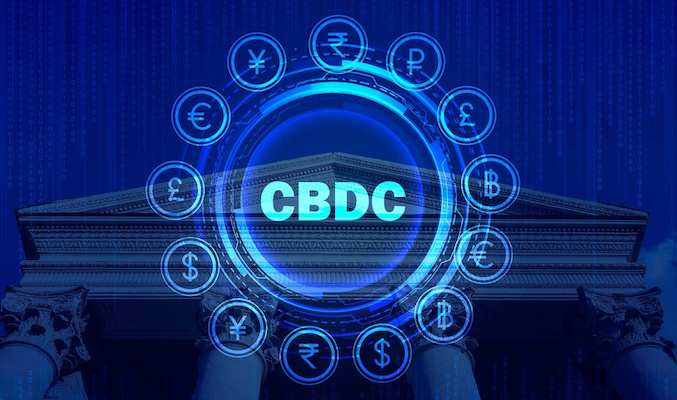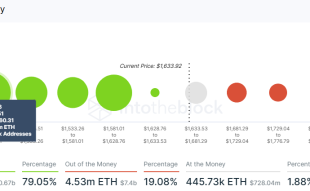Join Our Telegram channel to stay up to date on breaking news coverage
From 35 in May 2020, at least 114 central banks—representing 58% of all nations, which also produce 95% of the world’s GDP—are now studying central bank digital currencies (CBDCs). And a group of Bank of America cryptocurrency analysts are openly positive on the technology.
‘Digital currencies appear inevitable,’ says the conclusion of a recent research study. We see distributed ledgers and digital currencies like stablecoins and CBDCs as a logical development of the current financial and payment systems.
The research analyzes the potential advantages and disadvantages of CBDCs—both in terms of their issuance and non-issuance—as well as various distribution strategies. The report includes a number of case studies that focus on the growth and difficulties of CBDC in particular economic blocs and countries.
The outdated infrastructure and various inefficiencies of the current financial system are among of the experts’ primary findings—problems that properly constructed CBDCs might immediately address.
Benefits of CBDCs for Banks and Unbanked
When technology eliminates intermediaries, real-time settlement, total transparency, and lower costs may result from CBDCs’ ability to do so, according to the paper.
The researchers emphasize that banks must deposit an estimated $4 trillion in capital in equivalent banks in order to eliminate settlement risk. According to the report, this is an ineffective use of capital that could be producing yield in another area.
The research report contends that the requirement to pre-fund accounts at correspondent banks prevents less capitalized banks and payment service providers from expanding into cross-border payments:
The research states that
In practice, cross-border transfers pass through 2.6 distinct correspondent banks on average, lengthening the settlement time. However, more than five correspondent banks are required for 20% of cross-border payments made in euros.
The outcome? Ten times more money is spent on international transactions than local ones.
According to estimates from the U.S. Federal Reserve for 2021, the unbanked population—1.4 billion individuals worldwide and 6.5% of the population in the United States—will benefit from CBDC adoption, as per the researchers.
The unbanked lack access to conventional financial services and avenues for establishing their credit histories. They consequently experience more wealth separation, such as when they depend on payday loan services with poor terms and conditions.
This discrepancy might be nearly fully erased if a CBDC wallet were created to provide fundamental financial services like the ability to hold, transmit, and receive monies as well as generate credit histories and provide credit scores.
The paper asserts that
A CBDC that is accessible to those with bank accounts and smartphones would increase the banked population from 93.5% of households to 96.7% in the U.S. Removing the need for a smartphone would increase the banked population to 98%.
The fight between Stablecoins versus CBDCs
A few words are also said in the paper about the potential impact stablecoins may have on CBDC adoption. Taking note of the stablecoin transaction volume’s rapid expansion over the last two years, which increased to $7.9 trillion in 2022.
The report’s authors state:
The proliferation of stablecoins for cross-border and domestic payments and transfers could inhibit a central bank’s ability to implement monetary policy if growth remains unchecked and unregulated, as well as increase systemic risk. In some cases, loss of monetary control could lead to inflation significantly above current central bank targets.
The analysts claim that they “anticipate stablecoin acceptance and use for payments to expand in the absence of CBDCs as financial institutions explore digital asset custody and trading solutions” because their controls continue to operate positively in comparison to some traditional financial systems.
However, the researchers are concerned that stablecoins might spread much further into domestic and even cross-border payments if it takes too long to issue a CBDC. Stablecoins will “raise systemic risk in the traditional market and hinder a central bank’s ability to enact monetary policy” if their acceptance is let to grow.
The report does consider the possibility of stablecoins and CBDCs coexisting in the future. The analysts predict that stablecoins will continue to perform well in specific use cases, particularly when smart contracts are involved. However, the researchers opine that stablecoins won’t last much longer a few lines later.
“The paper claims that the design and programability of CBDCs will probably influence how widely stablecoins are adopted and used in the future. We also point out that CBDCs’ potential to replace stablecoins hinges heavily on the latter’s ability to work with blockchains and blockchain-based applications.”
Risks of CBDCs to banking and privacy
The Bank of America analysts shift to the potential dangers of issuing and not issuing CBDCs after six pages of discussing the potential advantages of CBDCs. The potential rivalry between commercial banks like Bank of America and the central bank tops the list of threats. The researchers claim that, particularly in times of crisis, “CBDCs are in some ways superior to bank accounts as stores of value.”
Despite the fact that commercial banks and central banks presently operate in a two-tier system, the paper claims that CBDCs could obfuscate the distinctions between the two. How would commercial banks be able to continue borrowing and lending their clients’ money if they could quickly and easily transfer their savings from a commercial bank into the central bank?
In fact, if safeguards are not incorporated into the architecture of the CBDC, bank runs may happen more frequently, which is the analysts’ second-ranked danger.
Because there is no credit or liquidity risk if dispersed through the direct and hybrid ways, they write,
During times of stress in the banking system, customers could withdraw deposits and exchange them for CBDCs, heightening financial stability risks.
In addition to the potential demise of the commercial banking sector, the academics struggle with the following two significant issues: How will governments persuade people to use their CBDC? And if and when they do, what will governments be able to accomplish?
The analysts acknowledge that the implementation of major policies will almost definitely be done gradually, prone to mistakes, and tainted by controversy.
Eleven nations have already released CBDCs, and the biggest central banks worldwide are either investigating designs or starting test programs. The earliest CBDCs, according to the analysts, were issued by the central banks of developing countries in an effort to increase financial inclusion in the absence of a commercial banking sector. These CBDCs were primarily intended for use in retail banking.
One of the 11 first-generation initiatives, the CBDC of the Eastern Caribbean Central Bank, suffered a catastrophic setback when the platform crashed in January 2022 and was unable to process transactions for two months. The analysts state that adoption and use of the ECCB’s CBDC have been “mostly unimpressive so far.” Adoption is not always guaranteed, and issuance is not the same as adoption.
Without a doubt, central banks are keeping an eye on the accomplishments and failures of this first class of CBDCs. The Bank of America analysts are concerned that the widespread acceptance of CBDCs could encounter resistance due to privacy issues as central banks and governments get ready for the introduction of next-generation CBDCs.
The authors acknowledge that the loss of the public’s right to privacy and anonymity that comes with physical money could be a barrier to CBDC adoption. The research offers a compromise based on policy for this.
“If a legislative framework giving a central bank or government the right to trace transactions if there are signs of criminal behavior, tax evasion, money laundering, or terrorism financing exists, payments made through CBDCs can stay anonymous,” the authors write. “But central banks abhor completely anonymous transfers.”
The researchers underline that any real or perceived violations of privacy could cause people to rethink the policy initiative and could lead to a rise in demand for CBDCs with greater legal safeguards.
Related
- Chaum Reveals His CBDC Of The Future
- Some central banks have given up on the race for digital currencies
- 90% of central banks are working on CBDC projects, thus it should be based on XRPL, according to Ripple
Join Our Telegram channel to stay up to date on breaking news coverage


